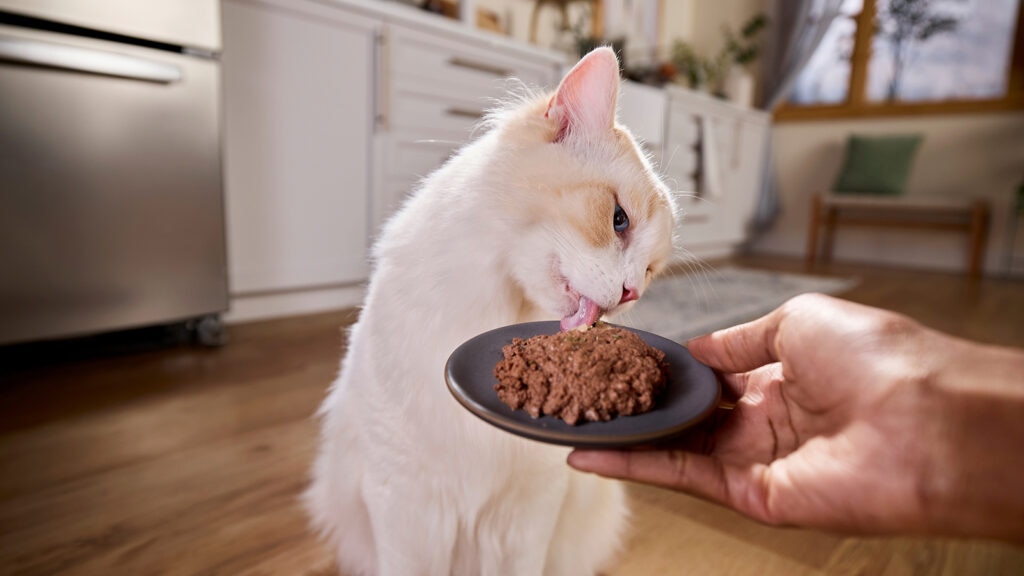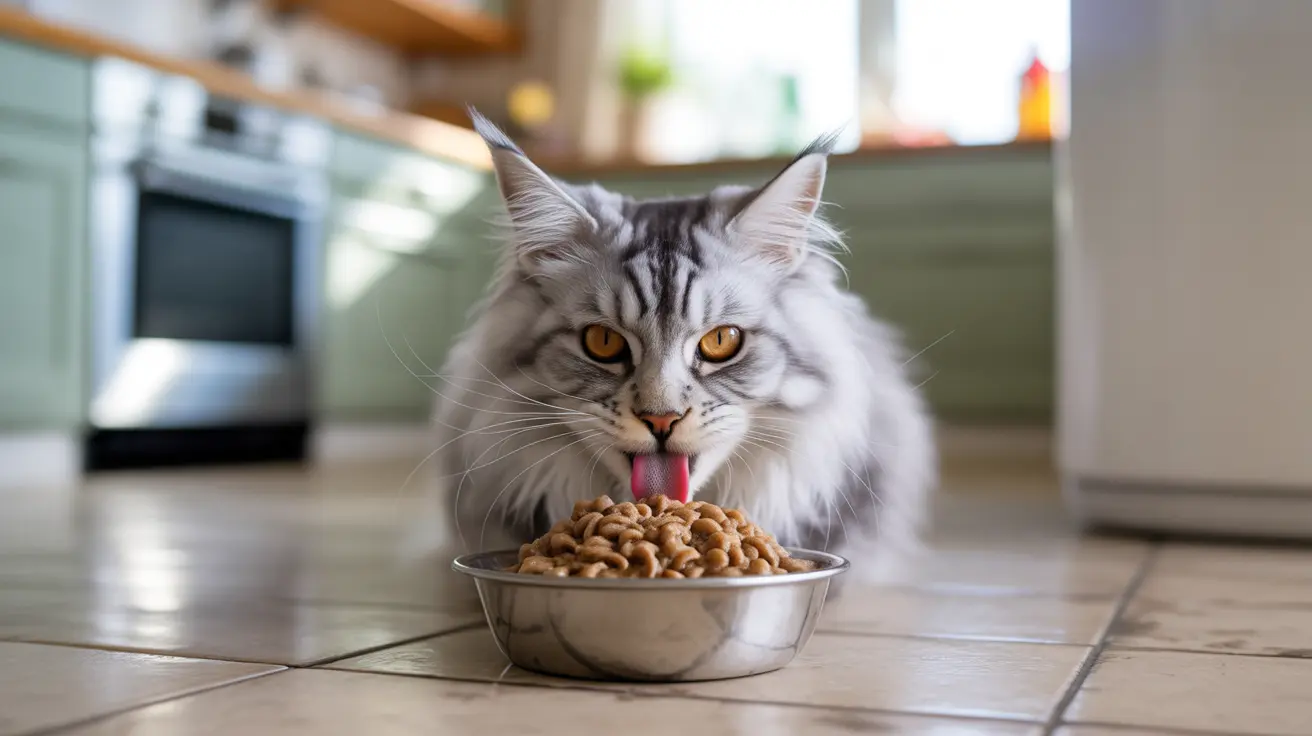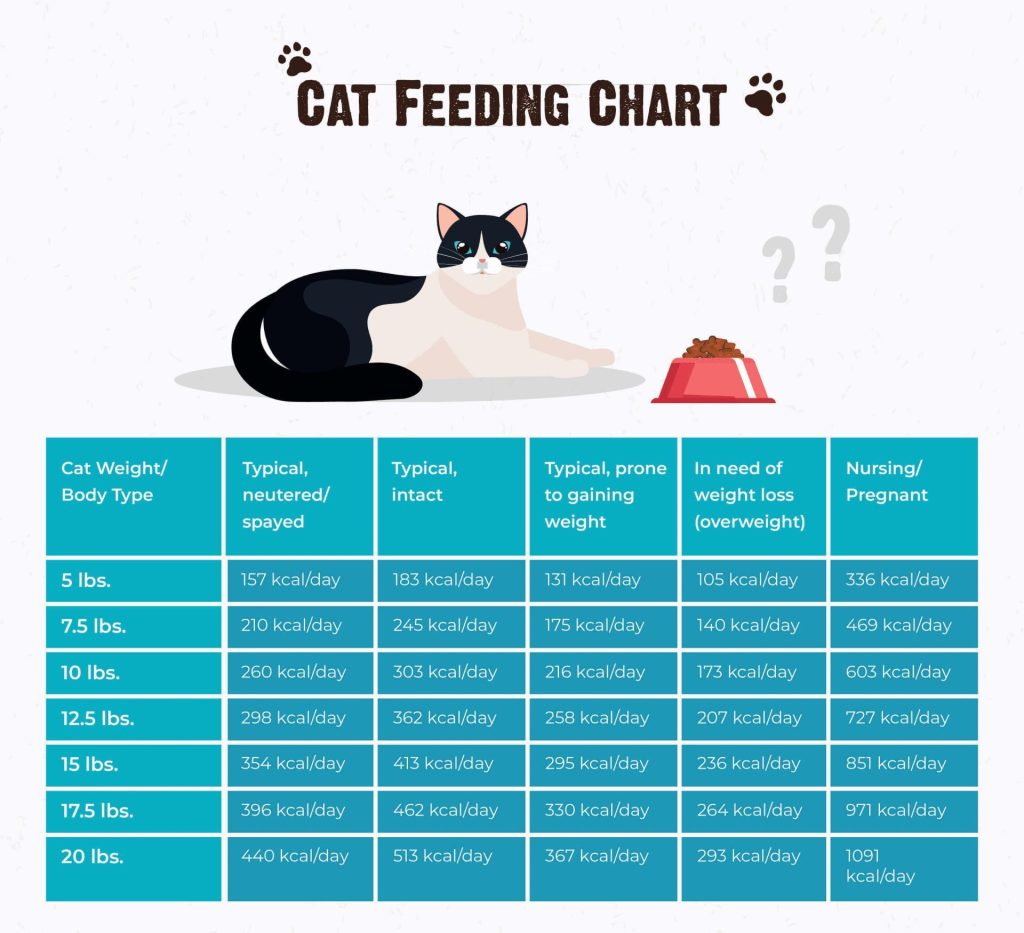If you’ve ever wondered how much soft food your cat should eat, you’re not alone. Knowing the right amount can keep your furry friend healthy and happy.
Too little, and your cat might feel hungry and restless. Too much, and it could lead to weight gain or digestive issues. You’ll discover simple tips to find the perfect balance for your cat’s soft food intake. Keep reading to ensure your pet gets just what they need—no more, no less.
Daily Soft Food Needs
Understanding your cat’s daily soft food needs is essential for keeping them healthy and happy. The right portion size ensures they get enough nutrients without overeating. Let’s break down what influences these amounts so you can feed your cat with confidence.
Factors Influencing Portions
Several factors affect how much soft food your cat should eat each day. These include their breed, metabolism, and whether they have any health conditions. For example, a Maine Coon may need more food than a smaller breed like a Siamese.
Also, the type of soft food matters. Some wet foods have higher calorie content, so you may need to adjust the amount accordingly. Always check the packaging for recommended serving sizes and tailor them to your cat’s specific needs.
Age And Weight Considerations
Kittens and senior cats have very different nutritional demands. Kittens need more calories per pound to fuel growth, while older cats may require fewer calories due to slower metabolism.
Weight plays a crucial role too. An overweight cat requires smaller portions to encourage weight loss, while underweight cats might need extra servings. Have you weighed your cat recently? Knowing their exact weight can help you serve the perfect portion.
Activity Level Impact
Your cat’s daily activity level directly affects their food intake. A highly active cat, who loves to play and explore, burns more calories and needs larger portions. On the other hand, a mostly sedentary cat will require less food to avoid gaining excess weight.
Try observing your cat’s energy and adjust their meals accordingly. Are they bouncing around all day or napping most of the time? Matching their food portions to their lifestyle helps maintain a healthy weight and overall well-being.

Credit: www.chewy.com
Types Of Soft Food
Choosing the right type of soft food for your cat can make a big difference in their eating habits and overall health. Soft foods come in several varieties, each with unique benefits and considerations. Understanding these options helps you decide what suits your cat’s preferences and dietary needs best.
Wet Canned Food
Wet canned food is one of the most common types of soft food for cats. It contains high moisture content, which helps keep your cat hydrated, especially if they don’t drink much water on their own.
This food is usually rich in protein and flavors that cats love, making it a great choice for picky eaters. Just remember to check the label for high-quality ingredients and avoid cans with excessive fillers or artificial additives.
Pouched Meals
Pouched meals are a convenient alternative to canned food. They often come in small, easy-to-open packets that keep the food fresh and are perfect for portion control.
Many cats enjoy the texture and variety of flavors available in pouches. If you travel or need to feed your cat on the go, these meals can be a practical and mess-free option.
Homemade Soft Diets
Preparing a homemade soft diet allows you to control exactly what your cat eats. You can blend cooked meats, vegetables, and supplements into a smooth, palatable meal tailored to your cat’s needs.
While this requires more effort, many cat owners find it rewarding to provide fresh, wholesome food. Have you ever tried mixing a new recipe for your cat and noticed how excited they get at mealtime?
Feeding Frequency
Feeding frequency plays a big role in a cat’s health and happiness. Cats are natural grazers and prefer to eat small amounts throughout the day. The right feeding schedule can help maintain their weight and energy levels. It also supports digestion and keeps them satisfied. Setting a consistent routine helps your cat feel secure and reduces begging or overeating.
Meal Timing Tips
Feed your cat at regular times each day. Most cats do well with two to three meals daily. Space meals evenly to keep hunger in check. Try feeding in the morning and evening for balance. Avoid leaving food out all day unless your vet suggests free feeding. Watch your cat’s behavior to find the best times for meals.
Free Feeding Vs Scheduled
Free feeding means leaving soft food available all day. This suits cats who eat small amounts often. Scheduled feeding offers measured meals at set times. This helps control portions and prevent weight gain. Some cats overeat with free feeding, so watch their weight closely. Choose the method that fits your cat’s habits and health needs.
Adjusting Based On Appetite
Appetite can change due to age, health, or activity. Notice when your cat eats less or more than usual. Adjust meal size or frequency to match their appetite. Sick or stressed cats may eat less and need smaller, frequent meals. Always consult a vet if appetite changes suddenly or lasts long. Flexibility keeps your cat comfortable and well-nourished.
Signs Of Overfeeding And Underfeeding
Recognizing the signs of overfeeding and underfeeding your cat can save you from costly vet visits and ensure your feline friend stays happy and healthy. Cats communicate their needs in subtle ways, so paying close attention to these signals helps you adjust their soft food intake appropriately. Let’s break down the key signs you should watch for to keep your cat’s diet on track.
Weight Gain And Loss Indicators
Sudden or gradual weight changes are the most visible signs of feeding issues. If your cat is gaining weight quickly, it might mean you’re offering too much soft food or treats. Conversely, noticeable weight loss could indicate they’re not getting enough nutrition or struggling to eat the food provided.
Use a scale or regularly check your cat’s body condition by feeling their ribs and spine. You should be able to feel them without pressing hard but not see them prominently. This simple habit can help you catch feeding problems early.
Behavioral Changes
Changes in eating habits can signal overfeeding or underfeeding. An overeating cat might beg for food more often or become lethargic after meals. A cat that’s underfed may seem restless, vocalize more, or hide away due to weakness or hunger.
Observe your cat’s mood and energy levels. Has your once playful kitty become sluggish or irritable? Such behavioral shifts often link directly to diet issues and require prompt attention.
Health Risks
Overfeeding soft food, especially if rich in calories, can lead to obesity, diabetes, and joint problems. Underfeeding, on the other hand, weakens your cat’s immune system, causes muscle loss, and may result in nutrient deficiencies.
Regular vet check-ups are crucial to monitor these risks. Ask your vet about the right portion sizes and how to balance soft food with other dietary needs to avoid these health complications.
Combining Soft And Dry Food
Combining soft and dry food can give your cat a balanced and enjoyable diet. This mix offers variety in texture and flavor, which many cats prefer. It also helps with hydration and dental health. Feeding both types can meet your cat’s nutritional needs better than using one alone.
Balancing Nutrients
Soft food contains more moisture, which helps keep cats hydrated. Dry food usually has more fiber, aiding digestion. Mixing both types ensures your cat gets protein, fat, vitamins, and minerals. This balance supports overall health and energy levels. Each meal can provide a full range of nutrients your cat needs.
Transitioning Between Foods
Switching your cat to a mix of soft and dry food requires care. Start by adding a small amount of the new food to the current diet. Gradually increase the soft or dry food over 7 to 10 days. Watch for any stomach upset or refusal to eat. This slow change helps your cat accept both foods comfortably.
Benefits Of Mixed Diets
- Improves hydration with the moisture in soft food
- Keeps teeth cleaner with crunchy dry food
- Provides variety to prevent boredom
- Supports healthy weight with balanced calories
- Boosts nutrient intake for better health

Credit: www.petscare.com
Special Diets And Medical Needs
Special diets and medical needs can greatly influence how much soft food your cat should eat. Cats with health issues often require tailored feeding plans that balance nutrition with their specific conditions. Understanding these needs helps you provide the right amount of soft food to support their well-being.
Feeding Cats With Health Issues
If your cat has health problems like kidney disease, diabetes, or dental issues, their food intake needs careful monitoring. Soft food is often easier to chew and digest, but the quantity must be adjusted to prevent weight gain or nutrient imbalances.
For example, a cat with kidney disease may benefit from a reduced protein diet, so feeding smaller portions more frequently can help. You might notice your cat’s appetite changes during illness—are you tracking those shifts to adjust portions accordingly?
Veterinary Recommendations
Your vet is the best source for advice on how much soft food your cat should eat, especially with medical concerns. They can suggest specific brands, portion sizes, and feeding schedules based on your cat’s diagnosis.
Don’t hesitate to ask your vet about signs that indicate overfeeding or underfeeding. Have you ever wondered if the feeding guidelines on pet food labels really match your cat’s unique needs?
Supplements And Additives
Sometimes, soft food alone doesn’t meet all your cat’s dietary needs. Adding supplements like omega-3 fatty acids or probiotics can improve health but may also affect how much food your cat requires.
Be cautious with additives; too many can disrupt appetite or digestion. Are you aware of how certain supplements might change your cat’s hunger signals or energy levels?
Measuring And Monitoring Portions
Measuring and monitoring portions of soft food for your cat helps maintain their health. It prevents overfeeding and ensures they get the right nutrients. Watching portion sizes keeps your cat at a healthy weight and supports good digestion.
Using Feeding Guides
Most cat food packages have feeding guides. These guides suggest how much food to give based on your cat’s weight. Use these as a starting point. Remember, each cat is different. Adjust portions if your cat is more or less active than average.
Tracking Intake
Keep a daily record of how much soft food your cat eats. Note the amount offered and what is left uneaten. This helps spot changes in appetite early. Tracking also helps avoid feeding too much or too little food.
Adjusting Portions Over Time
Your cat’s needs change as they grow or age. Adjust food portions based on their weight and health. If your cat gains weight, reduce the food slightly. If they lose weight or seem hungry, increase portions carefully.

Credit: www.amazon.co.uk
Frequently Asked Questions
How Much Soft Food Should A Cat Eat Daily?
A cat’s daily soft food intake depends on age, weight, and activity. Typically, 3-4 ounces per 5 pounds of body weight is ideal. Always check the feeding guide on the cat food packaging for precise portions. Consult your vet for personalized advice.
Can Kittens Eat The Same Amount Of Soft Food As Adults?
Kittens need more calories and nutrients than adult cats. Feed kittens about twice the amount per pound compared to adults. Their digestive systems also require more frequent, smaller meals throughout the day. Adjust portions as they grow to ensure healthy development.
Is It Okay To Mix Soft And Dry Cat Food?
Yes, mixing soft and dry food can balance nutrition and texture. Soft food adds moisture, while dry food supports dental health. Ensure the total daily intake matches your cat’s dietary needs to avoid overfeeding or nutrient imbalance.
How Often Should I Feed My Cat Soft Food?
Most cats do well with two meals of soft food daily. Feeding twice a day helps maintain energy and prevents overeating. For kittens or special needs cats, more frequent feedings might be necessary. Always follow your vet’s feeding recommendations.
Conclusion
Finding the right amount of soft food for your cat is key. Too much can lead to weight gain. Too little may not meet nutritional needs. Observe your cat’s behavior and health. Adjust the portions as needed. Consult a vet for personalized advice.
A balanced diet keeps your cat healthy and happy. Regular check-ups ensure your feeding plan works. Always prioritize your cat’s well-being. With a little attention, you can find the perfect feeding routine. Happy, healthy cats make happy owners.

